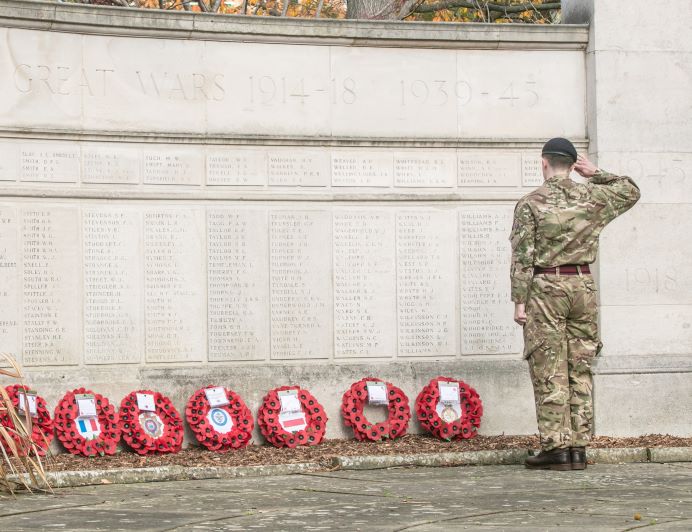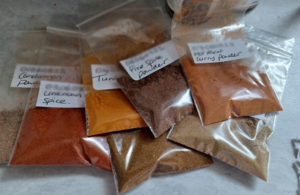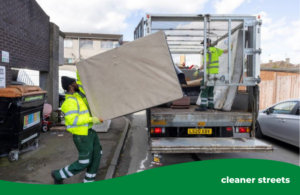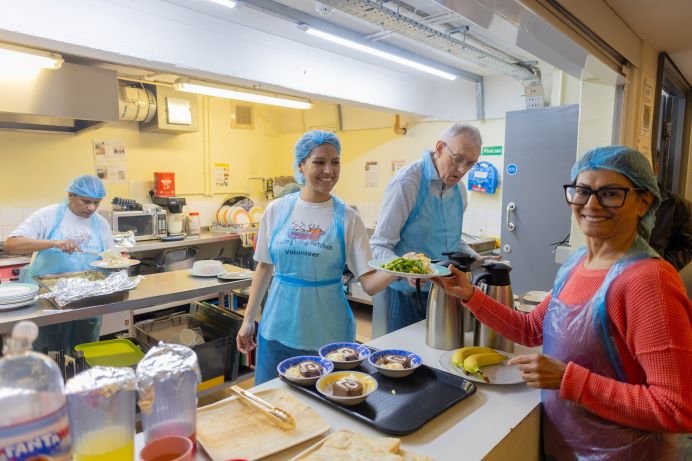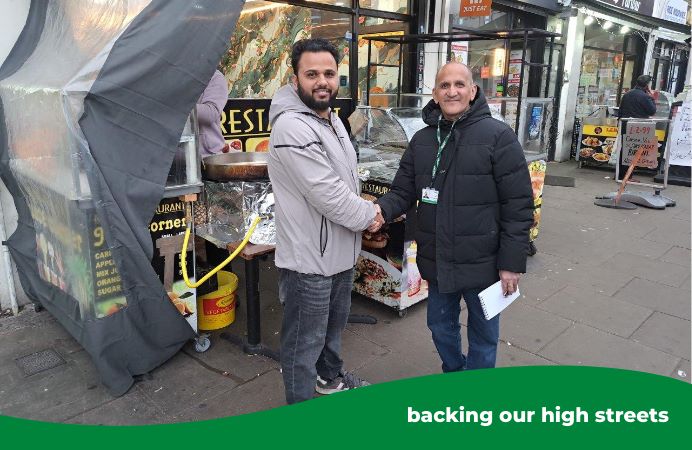Ealing Council dignitaries, community groups, residents and members of the armed forces joined together for their own quiet reflections; and to jointly commemorate the sacrifices made by our armed forces, past and present during a series of Remembrance events across the borough,
The first Remembrance Day was held in 1919 throughout Britain and the Commonwealth. Originally called Armistice Day, it commemorated the end of hostilities the previous year. It came to symbolise the end of the war and provide an opportunity to remember those who had died, and for reflections on what had occurred.
A number of gatherings, ceremonies and parades were held across the borough as communities united to remember those who lost their lives in the conflict of war. Wreaths were laid at war memorials across the borough.
On Armistice Day, a silence was held outside Ealing Town Hall.
Mayor of Ealing, Councillor Mohinder Midha, then attended the Remembrance Sunday parade and ceremony at Ealing War Memorial on Ealing Green, in front of Pitzhanger Manor, with a two-minute silence at 11am. She was joined by the King’s representative, Deputy Lieutenant Richard Kornicki, council leader Peter Mason and the council’s chief executive Tony Clements.
Deputy mayor Councillor Hitesh Tailor, and deputy council leader Councillor Deirdre Costigan, were at the Greenford ceremony and laid wreaths at Greenford War Memorial.
The immediate past mayor of Ealing, Munir Ahmed, attended and laid a wreath at the Southall War Memorial. A crowd also gathered in Manor Park at the Southall War Memorial for a service at 11am. The congregation then headed to St John’s Church in Church Road for a short Remembrance Sunday service and to share their reflections on the occasion.
